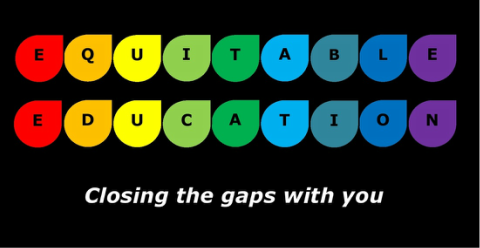
The research entitled ‘Non-native speakers of English in the classroom: What are the effects on pupil performance?’ by Charlotte Geay, Sandra Mc Nally, Shqiponja Telhaj, was published by the Centre for the Economics of Education at LSE in March 2012. The researchers highlighted the fact that the number of EAL learners has more or less doubled over the past fifteen years from approximately half a million to the present 1 million of EAL pupils in schools in 2012. The key focus of their research was ‘Does it matter for the educational attainment of ‘native English speakers’ at the end of primary school?’
The researchers used data from the National Pupil data base, which is the census of all pupils in state schools from 2012 -2009 and linked this to school level data sets. The Census data provides information on a range of factors such as EAL, ethnicity, gender, Free School Meal eligibility, Special Educational Needs and Disabilities, as well as prior attainment. These factors are often called pupil characteristics. They were also able to look in depth at school level data such as the school type, the size of the school, how many of the pupils were from disadvantaged backgrounds, pupil – teacher ratios and the amount of funding it receives etc. Much of this data nowadays for individual schools is in the public domain and is readily available on the DfE performance tables, which are available here.
Using this information they carried out two pieces of research focusing on KS 2 SATS which are exams that all pupils have to take in Year 6 and marks the end of primary schooling in England.
The two key areas they looked at were the following:
1. What was the association between the percentage of non–native speakers in Year 6 and KS attainment of native speakers of English, taking into account detailed characteristics of pupils.
2. Whether schools that had an increase of white non-native speakers as a result of EU enlargement had a change in attainment of native English in speakers, compared to other schools.
Their findings were as follows:
“There is a negative association between the percentage of non-native speakers and attainment of native speakers of English if we do not control for anything else”. Now this if is very important because of factors such as disadvantage which is measured by the proxy indicator of eligibility for free school meals (FSM). The researchers highlight that 15 % of non EAL speakers are eligible for FSM, compared to 18 % for white EAL learners and 28 % non –white EAL learners. Therefore, when minimal controls are put in to take account of these various characteristics “ …….this negative association goes away” . This is as a result of the fact that EAL pupils or non-native English speakers on average go to more disadvantaged schools.
They conclude……….’ negative association in the raw data between the percentage of non-native speakers and the educational attainment of native English speakers is easily removed – even by controlling for very limited characteristics of native English speakers. The negative correlation can be explained by sorting of non-native speakers into schools with less desirable characteristics. Under certain assumptions, the strategies used in this paper can be used to make an inference about causal effects. Both strategies suggest that negative effects can be ruled out. This is not surprising in the light of positive selection of first and second immigrants to the UK in terms of their educational attainment, although it does refute perceptions (in the media) that the increase in students who do not speak English as a first language is detrimental to the education of native English speakers.
The result also makes sense in the context of other research about ethnic minorities in England. Dustmann, Machin and Schonberg [1] show that most ethnic minority groups progress through primary school at a faster rate than white British students (as measured by the increase in attainment between age 7 and 11) and that improvements in the proficiency of the English language is likely to be the most important contributing factor. Thus it seems likely that most primary-aged students catch up in English proficiency at a rate such that they do not impede the progress of their native-speaking peers.”
Should you wish to watch Sandra McNally giving an overview of the research report, a short video clip is available here courtesy of Cambridge Assessment.
A full copy of the report is available here.
[1] Dustmann, C., S. Machin and U. Schonberg, (2010), Educational Achievement and Ethnicity in Compulsory Schooling. Economic Journal, 120(546): F272-F297

 RSS Feed
RSS Feed
